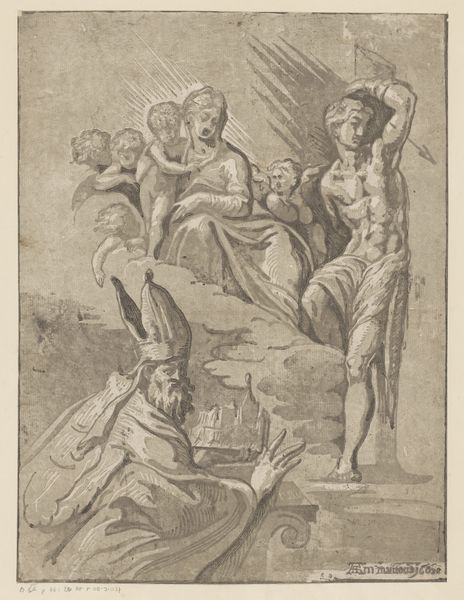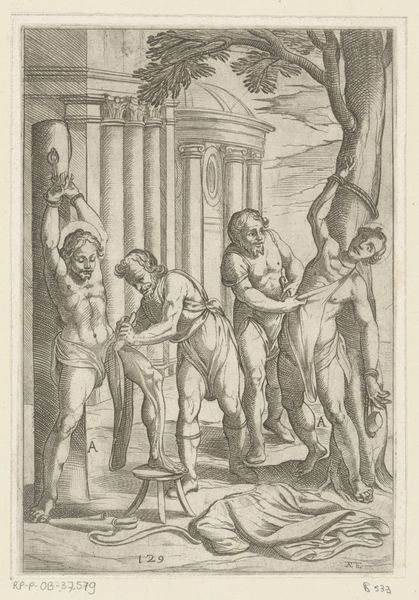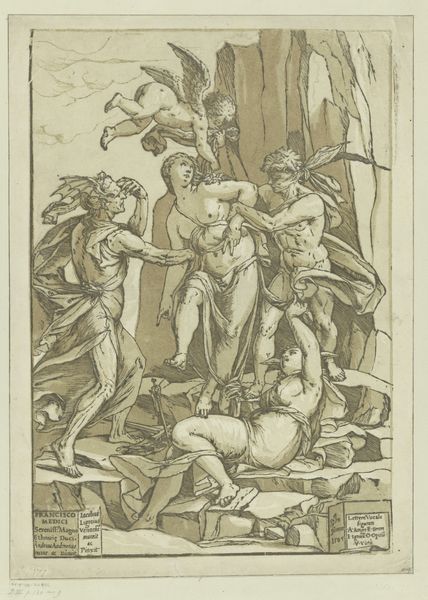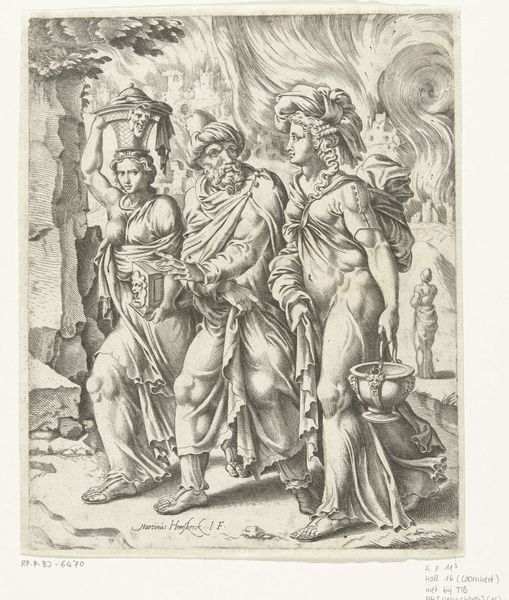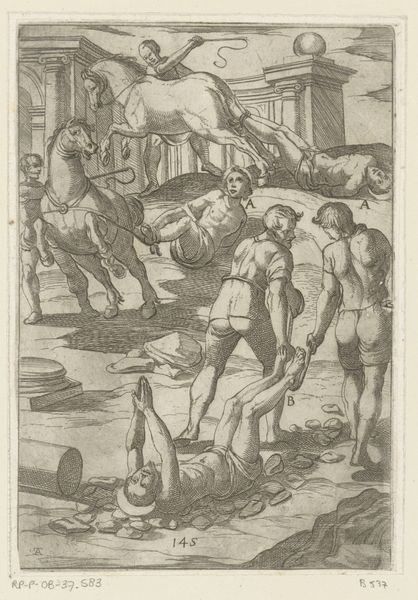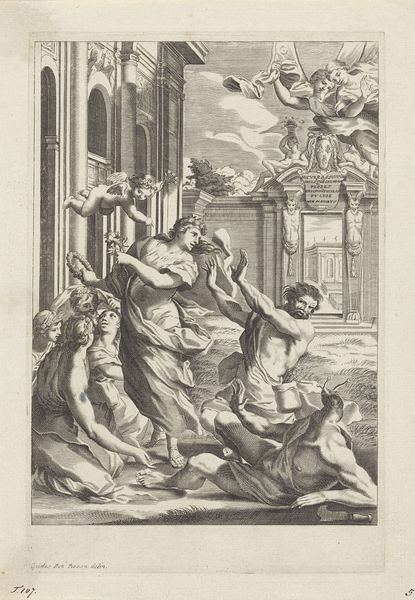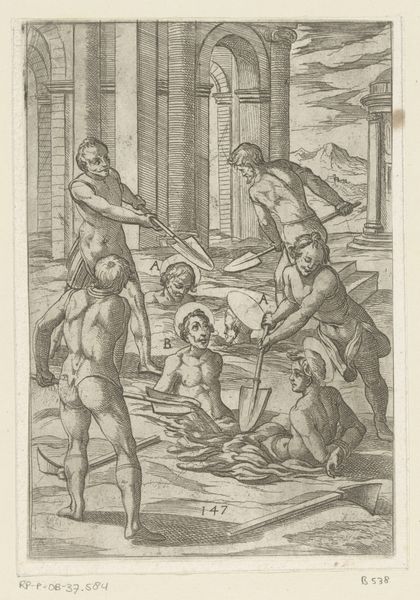
print, engraving
#
narrative-art
# print
#
old engraving style
#
mannerism
#
figuration
#
history-painting
#
engraving
Dimensions: height 194 mm, width 133 mm
Copyright: Rijks Museum: Open Domain
Editor: Here we have Antonio Tempesta’s engraving, "Foltering met scherpe punten en kokende olie," which dates from sometime between 1565 and 1630. The scene is, as you might guess from the title, incredibly violent and unsettling. What symbols jump out to you in this piece? Curator: It’s tempting to simply focus on the graphic violence, isn’t it? But violence itself is almost always symbolic. I'm drawn to the classical architecture in the background, framing the torture. Notice how the architectural forms almost mimic the human forms enacting violence – the archway, the pillars - rigid, unwavering, reflecting the perpetrators' resolve. Editor: I hadn’t considered that! The building feels so detached from the gruesome acts in the foreground. Curator: Exactly. The setting elevates what could be seen as mere brutality into a formalized, almost ritualized act. What do you make of the man pouring boiling oil, specifically the almost nonchalant expression he carries? Editor: He seems disconnected. Maybe Tempesta is showing how easily people can detach themselves from the consequences of their actions when they believe they're serving a higher purpose. Curator: Precisely. Think about how power, both religious and political, was visually reinforced during this period. The deliberate cruelty depicted isn't just about inflicting pain; it's about projecting power, erasing dissent through spectacles of suffering. The symbolism of fire, cleansing and destructive, is hard to ignore too. Editor: So, it’s a warning, perhaps? Curator: Perhaps a commentary on the psychological cost of unchecked power. Each element—the architecture, the act of torture, the detached expressions—contributes to a chilling symbol of dehumanization. Editor: I never thought about it that way. I came in seeing only the horror of torture. I'm leaving with a much deeper, and frankly, more disturbing, understanding of the work. Curator: It’s the power of images to transcend the immediate and speak to enduring anxieties. I appreciate your insightful reading of this difficult work.
Comments
No comments
Be the first to comment and join the conversation on the ultimate creative platform.
